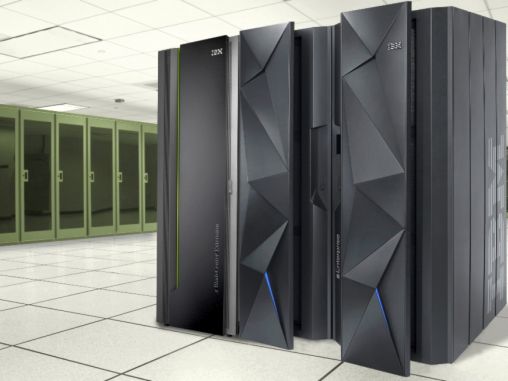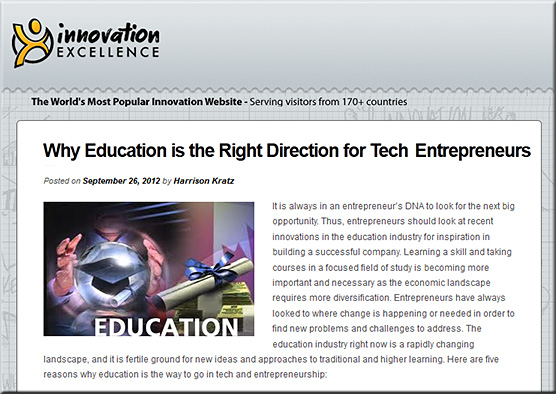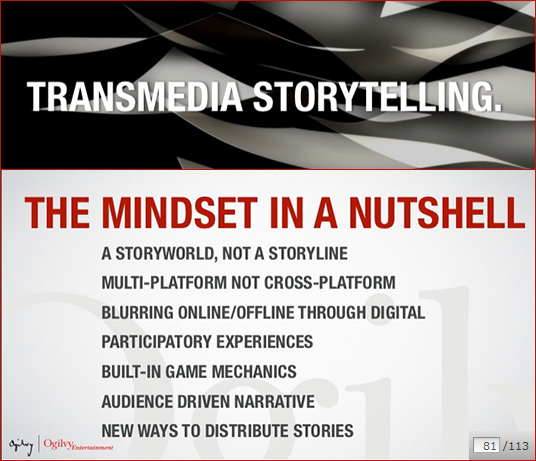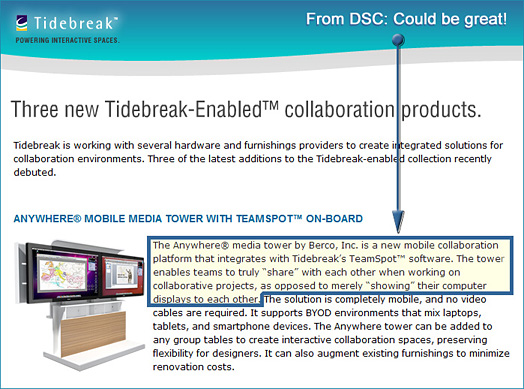Google’s answer to Siri thinks ahead — from technologyreview.com by Tom Simonite
The company’s data stockpile and investment in AI means a smartphone helper that answers queries before you even ask them.
The coming revolution in health care — from inc.com by Adam Bluestein
To understand how the American health-care system is about to change, forget Washington. Look to the innovative companies hard at work on the future.
Excerpts/BIG IDEAS:
- Medicine is a marketplace
With new software, the doctor will see you now, not in three weeks.
. - The consumer is king
How to get good data into the hands of patients.
. - The digital health record is here
A cure for chronic paperwork.
. - Health care is social
Is the crowd smarter than your doctor? Just possibly.
. - The house call makes a comeback
A computer screen becomes an exam room.
. - The algorithm is in
Why smart software means better diagnoses.
. - Your doctor is watching you
How a simple text message can make you healthier.
Also see:
- Could ePatient networks become the superdoctors of the future? — from fastcoexist.com by Anita Hamilton
As technology allows patients to pool their knowledge, can the collective experience of the sick create better care?
Green light given to driverless cars in California. — from nbcnews.com by Sarah McBride
.

Google’s self-driving car goes out for a spin.
Addendum on 9/27/12:
- Self-driving cars could bring a new world of hacking — from techhive.com by Liviu Oprescu
The future of Microsoft’s Xbox appears to be moving briskly toward interactive TV,
based on a high-profile hire of CBS Entertainment’s former television chief and the
launch of two interactive TV “programs” that tap into Microsoft’s Kinect peripheral.
.
1.5 million homes cut the cord in Q1 2012 — from videomind.ooyala.com by Greg Franzese
Excerpt:
Americans continue to gobble up online video, watching almost 35 hours a week across all connected screens.
My thanks to Michell Zappa, Founder Envisioning Technology for this item:
Excerpt:
Technology is the ultimate democratizing force in society. Over time, technology raises lowest common denominators by reducing costs and connecting people across the world. Medical technology is no exception to this trend: previously siloed repositories of information and expensive diagnostic methods are rapidly finding a global reach and enabling both patients and practitioners to make better use of information.
Our new visualization is an exercise in speculating about which individual technologies are likely to affect the scenario of health in the coming decades. Arranged in six broad areas, the forecast covers a multitude of research and developments that are likely to disrupt the future of healthcare.
Embedded ubiquitous learning — from the Upside Learning blog by Abhijit Kadle
Excerpt:
What would ubiquitous learning look like? Well, there isn’t an easy answer to that. It is hard to foresee what will come about personal computing technologies in the next decade. In my eyes, from a learning perspective, there are a few key themes (emphasis DSC):
- Discovery and delivery – the ability to use agents that comprehend context, are able to make ‘coherent’ sense of varied data streams to search for information, discover, and provide content – just in time, in the correct context and in the appropriate format.
- Machine to Machine communication – While there is no doubt that this will happen, and that the ‘internet of things’ isn’t very far away in the future. One thing I found fascinating is the idea that you could create a ‘learning profile’, an identity that is essentially a digital package of your learning preferences and the contents of your past learning, that can be accessed by machines. This would let the ‘machine’ actually tailor its user interfaces, learning content and the experience itself, and present information in a way that suits the preferences of the human.
- Embedded learning – networked learning that is built into every device, every tool, every physical resource humans use; there is no need for specific training; the latest information is available just in time, from authentic sources, judged valuable by network analysis, provided with the right context and assists humans to complete tasks
Robot vs. human: Drum cover of classic punk hit by The Ramones — from singularityhub.com by David J. Hill
Cheetah Robot runs 28.3 mph; a bit faster than Usain Bolt
DARPA’s robotic cheetah, developed by Boston Dynamics, runs faster than Usain Bolt. (DARPA)
Bonus postings! 🙂
- ROBO-ONE 21: Championship Match (Video) — from robot dreams
Garoo faces off against Cortejyu Miharusu in the final match for the ROBO-ONE 21 Championship. Garoo is the defending champion and the crowd favorite. By tempusmaster. -
A desktop Singularity: Security cam footage of The Technological Singularity as it actually happened — by Socrates <– From DSC: also could be called, “Watch out how hard you hit your computer!” 😉
Futurist’s Cheat Sheet: Quantum Computing — from ReadWriteWeb.com by Dan Rowinski
Excerpt:
Moore’s Law describes the phenomenon that makes this year’s computer more capable and less expensive than last year’s. But it won’t go on forever. While engineers have come up with various schemes to keep it rolling, quantum computing is the best hope for extending it indefinitely. The concept has been proven in the lab, but working quantum computers are not a foregone conclusion. Here is a quick-and-dirty primer on a very complicated technology. (The “Futurist’s Cheatsheet” series surveys technologies on the horizon: their promise, how likely they are, and when they might become part of our daily lives. This article is Part 3.)
Futurist’s Cheat Sheet: Holographic Displays — from ReadWriteWeb.com by Dan Rowinski
Futurist’s Cheat Sheet: Biometric Authentication — from ReadWriteWeb.com by Dan Rowinski
IBM working on Watson app for smartphones — from extremetech.com by Sebastian Anthony
Excerpt:
After conquering Jeopardy, battling patent trolls, and chasing down health insurance fraudsters, IBM now plans to bring Watson to smartphones. Watson is an artificial intelligence that is capable of answering very complex questions using natural language answers. In essence, IBM is hoping to build a better, faster, and more professional/enterprisey version of Apple’s Siri, the voice-controlled assistant that debuted on the iPhone 4S.
.

Watson, come here: A clue to cancer! — from jumpthecurve.net by Jack Uldrich
Excerpt (emphasis DSC; regarding the video there, I don’t think we can so easily access/create/contain “wisdom”):
Last year, I published my top ten trends in health care. Number Five on the list was “artificial intelligence.” Specifically, I addressed the ability of IBM’s “Watson” supercomputer to revolutionize diagnosis.
Well, the folks at Memorial Sloan-Kettering have now hired Watson. If you’re in the healthcare industry, I can’t encourage you strongly enough to watch the following two-minute video because it points toward the future of cancer diagnosis.
As one of the physicians says in the video, “This is beyond evolutionary, this is revolutionary!” He goes on to add, “This could totally change the way we conduct medicine.”
The zEC12 aims to do what “private clouds” do faster, better, and cheaper.

Active in Cloud, Amazon reshapes computing — from The New York Times by Quentin Hardy
Excerpt:
SEATTLE — Within a few years, Amazon.com’s creative destruction of both traditional book publishing and retailing may be footnotes to the company’s larger and more secretive goal: giving anyone on the planet access to an almost unimaginable amount of computing power.
NBC News app coming to Xbox 360 games console — from worldtvpc.com
NBC News is coming to your Xbox 360, and in the process could be showing us a glimpse of television for the Xbox in the future. Comcast and Microsoft are strengthening their partnership to bring an NBC News App to the perennial gaming console. More than 26 million people are using Xbox 360s with an Xbox Live Gold Account, a majority of which are not playing video games, but rather using the device to stream content.
.
Survey paints positive outlook for connected TV platforms — from blog.brightcove.com
.

New iOS app Renewed provides personal television guide and more — from World Internet TV on PC by skyler
Excerpt:
A new app has arrived for iOS devices called Renewed, and anyone who is seeking a personalized television guide and find out if their favorite shows are going to be renewed, will want to download this free app immediately. The app, which notifies you of upcoming shows will also provide viewers with up to date information on renewals and cancellations–even pre-emption!
What’s on TV? Online videos of course! — from gigamom by Om Malik
Consumers increasingly viewing online content on TVs — from pcmag.com by Stephanie Mlot
Sony files patent to make TV ads into video games — from fastcodesign.com
Your friends are your next TV Guide — from fastcompany.com
Adobe Systems set to enhance “Everywhere TV” platforms — from worldtvpc.com
From DSC:
The above types of items lay the foundation for:
.
![The-Living-Class-Room-Daniel-S-Christian---July-2012 The Living [Class] Room -- by Daniel Christian -- July 2012 -- a second device used in conjunction with a Smart/Connected TV](http://danielschristian.com/learning-ecosystems/wp-content/uploads/2012/07/The-Living-Class-Room-Daniel-S-Christian-July-2012.jpg)
Addendum:
- Sony Mashes Song Identification with Unlimited Music… on TV — from evolver.fmby Eliot Van Buskirk (9/13/12)





















